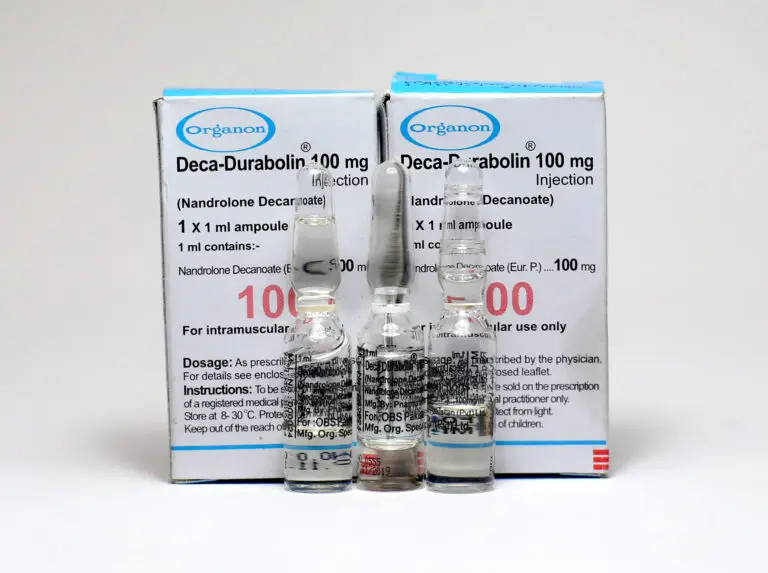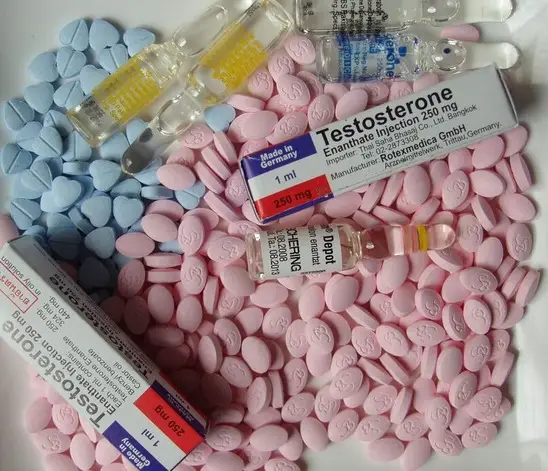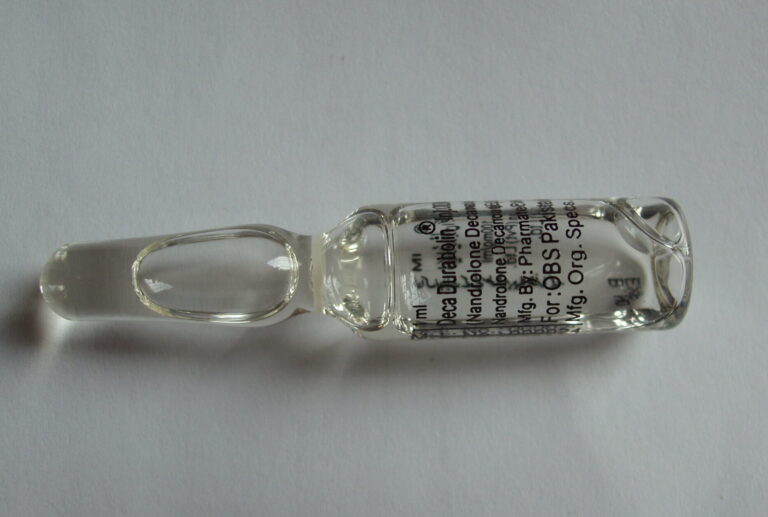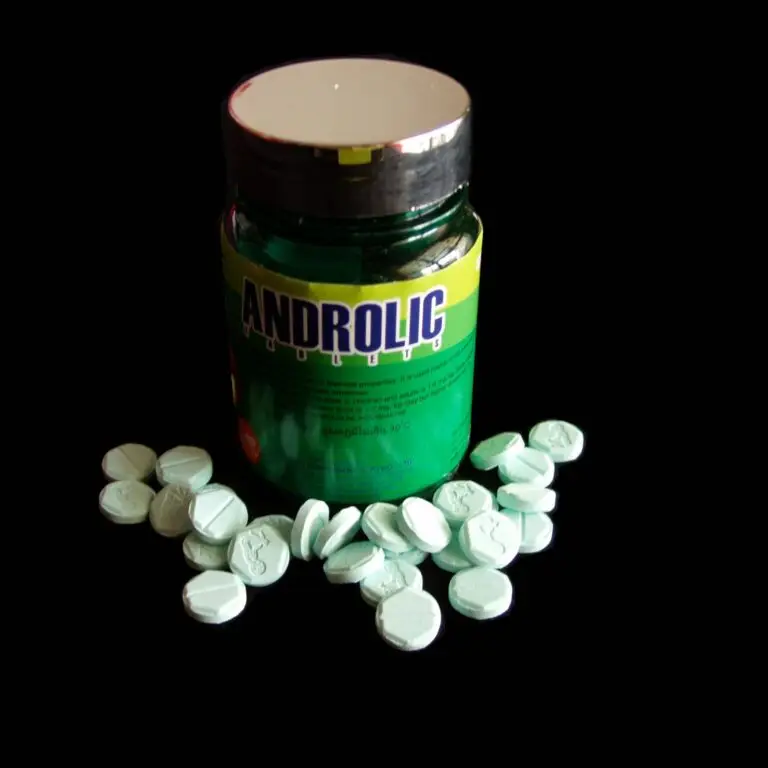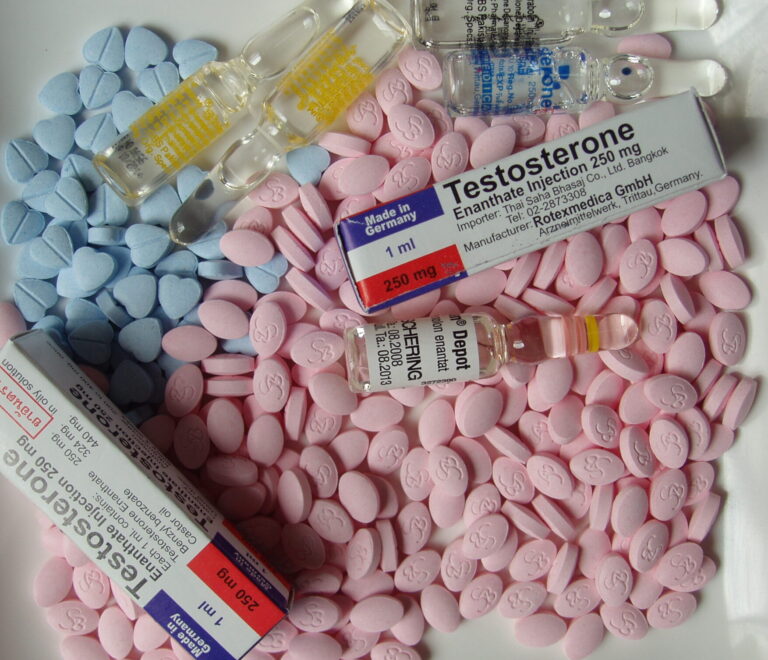Trenbolone
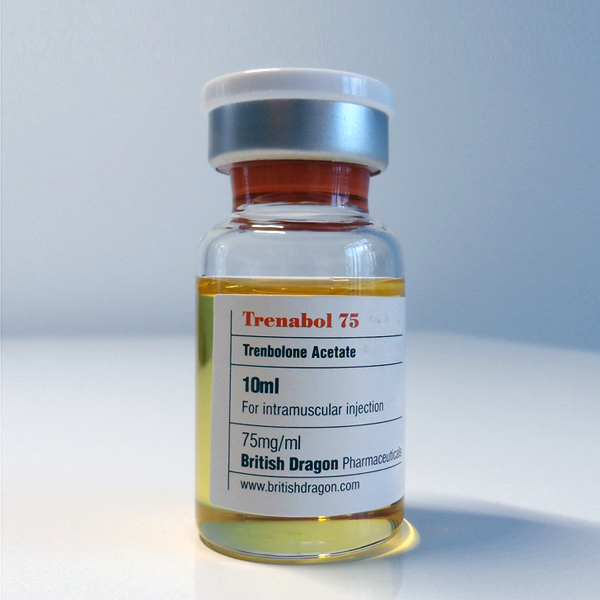
Introduction
Trenbolone is an androgenic-anabolic steroid (AAS) of the nandrolone family, known for its exceptional potency in promoting muscle growth. Originally developed for veterinary purposes, it has become popular among bodybuilders and athletes for its ability to rapidly increase muscle mass, strength, and improve overall body composition. Key attributes differentiate trenbolone from other steroids: it binds very strongly to androgen receptors and does not aromatize into estrogen (preventing water retention and bloating). This means users can achieve a hard, lean look without the fluid gains caused by aromatizing steroids. Trenbolone also exhibits significant nutrient partitioning effects – enhancing protein synthesis, nitrogen retention, and even fat burning – making it one of the most powerful AAS in use. These traits have made trenbolone a centerpiece (albeit a controversial one) in advanced bodybuilding, where maximizing muscle while minimizing fat is the ultimate goal.
History and Development
Trenbolone was first synthesized in 1963 as a derivative of nandrolone. It was initially developed for veterinary use, particularly to improve the growth and appetite of livestock. Trenbolone Acetate was marketed in the 1970s under brand names like Finajet and Finaplix as a subcutaneous implant for cattle, dramatically increasing muscle gain and feed efficiency in beef production. A longer-acting trenbolone ester, Trenbolone Hexahydrobenzylcarbonate, was introduced for clinical use in humans under the brand Parabolan (in France), but this formulation was discontinued by the late 1990s due to concerns and regulatory changes. As athletes learned of trenbolone’s effectiveness, a transition to performance enhancement began: by the 1980s, trenbolone had gained popularity in bodybuilding circles despite its veterinary origins. Bodybuilders would obtain veterinary Trenbolone Acetate (often extracting it from Finaplix implants) or Parabolan ampoules from Europe, attracted by the drug’s reputation for dramatic effects on muscle hardness and size. Over time, underground labs also began producing trenbolone (including the Enanthate ester), further entrenching its use in the bodybuilding community. Today, trenbolone is regarded as a legendary yet illicit muscle-building drug, with a history rooted in animal husbandry but a legacy in physique sports.
Pharmacology and Mechanism of Action
Trenbolone’s effects are mediated by its strong interaction with the body’s androgen receptors. As an androgen agonist, trenbolone directly promotes increased protein synthesis and nitrogen retention in muscle tissue, which facilitates rapid muscle fiber growth and repair. Research indicates that trenbolone activation of the androgen receptor raises levels of IGF-1 (insulin-like growth factor 1) and IGF-1 receptors in muscle, further enhancing anabolic activity and stimulating the proliferation of satellite cells (muscle stem cells) for new muscle fiber formation. The result is a potent environment for muscle hypertrophy, translating to significant gains in strength and lean mass.
Trenbolone’s mechanism also contributes to fat loss. Studies on trenbolone have shown that it can reduce fat deposition; in experimental models, trenbolone use led to increased muscle mass with a concomitant reduction in body fat. It appears to have direct lipolytic effects, possibly by upregulating enzymes in the liver that enhance fat metabolism . Additionally, trenbolone may lower cortisol or anti-anabolic signals via binding to glucocorticoid receptors, thereby reducing catabolism (muscle breakdown) in the body. Unlike testosterone, trenbolone does not aromatize (convert) into estrogenic metabolites. This means estrogen-related effects such as water retention, fat gain, or gynecomastia from aromatization are negligible. However, trenbolone binds with high affinity to the progesterone receptor, which can indirectly lead to side effects like gynecomastia if estrogen is present from other sources.
In summary, trenbolone’s pharmacological profile is characterized by an exceptionally strong anabolic signal (estimated at several times that of testosterone in muscle-building potency), strong androgenic effects, and a unique ability to promote muscle gain while encouraging fat loss. Its androgen receptor affinity is one of the highest of any steroid, explaining both its effectiveness and the severity of its side effects. The drug’s pharmacokinetics depend on its esterified form (see below), but once active, trenbolone’s systemic actions include not only muscle anabolism but also impacts on numerous other tissues and hormone pathways, underlining why it must be used with caution.
Types of Trenbolone Compounds
Trenbolone is available (illegally, for bodybuilding purposes) in several esterified forms, which affect its release rate and half-life in the body:
- Trenbolone Acetate – This is the most common form used by bodybuilders. Trenbolone Acetate has a short ester, yielding a fast-acting steroid with an effective half-life around 2–3 days. Users often inject Tren Ace daily or every other day to maintain stable levels. A typical bodybuilding dosage is ~50–100 mg every other day, reflecting its rapid clearance. The fast action allows quicker strength and muscle gains, and if side effects become unmanageable, the drug can be stopped and cleared from the body relatively quickly. Trenbolone acetate is also the form used in veterinary implants (e.g. Finaplix), which has historically been converted for illicit human use.
- Trenbolone Enanthate – Trenbolone Enanthate is a longer-acting ester not approved for medical use but brewed by underground labs. It has an extended half-life of roughly 7–10 days, enabling more infrequent injections (usually 1–2 times per week). Doses commonly range around 200–300 mg per week in bodybuilding protocols. Users choose Tren E for convenience (fewer injections) and a more gradual release, which can result in slightly less spiking of blood levels. However, its side effects may persist longer due to the slow clearance. Trenbolone enanthate is sometimes nicknamed “Trenabol” on the black market.
- Trenbolone Hexahydrobenzylcarbonate (Parabolan) – This is a rare and longer-acting form of trenbolone (often just called “Tren Hex” or by the old brand name Parabolan). It has a half-life on the order of 8–10 days, similar to trenbolone enanthate. Parabolan was once produced for human use (76 mg ampoules by Negma Pharma in the 1980s) and had a dosing schedule of perhaps one ampoule every 1–2 weeks in clinical settings. In modern bodybuilding, authentic Tren Hex is uncommon, but when available, doses in the range of ~150–250 mg per week are used. It provides trenbolone’s powerful effects with a prolonged release, though any distinction between Tren Hex and Tren E is minimal in practice (both are long-acting trenbolone esters).
- Other Forms – Trenbolone Suspension (un-esterified trenbolone) exists but is extremely rare; it would require daily injection due to a very short half-life (hours) and is primarily of academic interest. Additionally, a potent oral derivative known as Methyltrienolone (methylated trenbolone) has been studied – it is highly anabolic but extremely hepatotoxic, and was never marketed for athletes. Methyltrienolone is used only in research or by experimenters, given its toxicity. In general, all trenbolone compounds share the same base steroid – differences lie only in how fast they are released into the bloodstream.
Comparison to Other Anabolic Steroids
Trenbolone is often compared with other popular anabolic steroids, and it is generally regarded as one of the most powerful. Below is a comparison of trenbolone’s effects versus several well-known steroids:
- Trenbolone vs. Testosterone: Testosterone is the natural hormone and standard for comparison (with an anabolic:androgenic ratio of 100:100). Trenbolone is significantly more potent than testosterone on a milligram-to-milligram basis, with studies suggesting it may be roughly 3× as anabolic (despite claims of 5× that are based on animal data). Unlike testosterone, trenbolone does not convert to estrogen, so it causes no estrogenic water retention or bloating. This means trenbolone yields drier, leaner gains in muscle. However, testosterone is generally better tolerated; it has a balanced anabolic and androgenic profile and is often used as a “base” steroid in cycles for normal physiological function. Trenbolone’s lack of estrogen conversion makes stacking with testosterone (or at least an aromatizing compound) important to maintain libido, joint health, and normal hormone balance while on cycle. In summary, trenbolone delivers more dramatic muscle-building and fat-loss effects than testosterone, but at the cost of much harsher side effects.
- Trenbolone vs. Nandrolone (Deca-Durabolin): Nandrolone (commonly known as Deca) is another 19-nor anabolic steroid, actually the parent compound from which trenbolone is derived. Deca-Durabolin has strong anabolic effects but only moderate androgenic activity and it does aromatize slightly (to a weaker estrogen called estradiol). Compared to Deca, trenbolone is far more potent in both anabolic and androgenic effects. Trenbolone yields faster, more substantial gains in strength and lean muscle, and it does not cause the mild water retention that Deca can. On the other hand, Deca is considered gentler: its side effects (e.g. hair loss, acne, blood pressure changes) tend to be milder for many users, and it’s often used in longer cycles for joint relief (Deca can improve collagen synthesis and lubricate joints). Both drugs can cause progesterone-related side effects (since both are progestins), but trenbolone’s strongly progestogenic nature and greater suppression of natural testosterone make its side effect profile more severe. In short, Deca-Durabolin is a milder anabolic good for steady gains and joint health, whereas trenbolone is a harsher compound reserved for those seeking maximum muscle and fat loss effects in a short time.
- Trenbolone vs. Dianabol: Dianabol (methandrostenolone) is a potent oral anabolic steroid known for rapid mass and strength gains, often used as a bulking agent. Dianabol, however, aromatizes to estrogen quite readily, causing significant water retention and weight gain (bloat) during a cycle. Trenbolone, by contrast, produces gains that are lean and dry with no estrogenic bloating. Users on trenbolone often report a more “chiselled” look even as muscle mass increases, whereas Dianabol users might appear puffier from water weight. Additionally, Dianabol is c-17 alpha alkylated, making it liver-toxic; trenbolone is an injectable and not liver-toxic to the same degree (though high doses might still stress the liver indirectly). Strength gains on both are notable, but trenbolone’s are typically considered more qualitative (accompanied by fat loss and increased hardness). Dianabol’s quick gains tend to diminish post-cycle as excess fluid drops off, whereas trenbolone’s gains, being mostly muscle tissue, are more retainable. However, trenbolone brings a host of other side effects (aggression, night sweats, etc.) that Dianabol (apart from estrogenic effects and liver strain) might not cause as severely. Some advanced bodybuilders actually combine the two (test + tren + Dianabol) in off-season cycles for maximal mass (using Dianabol’s rapid gains with trenbolone’s nutrient partitioning), but this is an aggressive approach with high risk.
- Trenbolone vs. Anavar: Anavar (oxandrolone) is a mild oral anabolic steroid favored for cutting cycles, including by beginners and even female athletes (in low doses), due to its gentle side effect profile. In comparison to trenbolone, Anavar’s effects on muscle building are relatively modest – it primarily helps enhance strength and tighten the physique without large mass gains. Trenbolone is dramatically more powerful at building muscle and strength, but also far more androgenic, making it completely unsuitable for women (trenbolone causes rapid virilization). Anavar does not aromatize and has very low androgenic activity, so side effects like acne, hair loss, blood pressure changes, etc., are minimal in most users; trenbolone conversely carries a high risk of all these issues. On the positive side, both Anavar and trenbolone are effective for fat loss and improving muscle definition. Many bodybuilders use trenbolone as a sort of “next level” compound after plateauing with milder drugs like Anavar. In practice, Anavar might add a few pounds of lean muscle and strength with negligible side effects, whereas trenbolone can add tens of pounds of mass but at a much greater physiological cost.
Usage in Bodybuilding
Trenbolone is used in both bulking and cutting cycles in bodybuilding, although its traits lean toward making a physique look hard and defined. In bulking cycles, some advanced users include trenbolone (often Tren E or Tren A alongside a base of testosterone) to add high-quality muscle mass with less fat gain. Trenbolone’s nutrient-partitioning effect allows muscle growth even on moderate calories, and any weight gained tends to be lean tissue. Unlike classic bulking agents (e.g. Dianabol or Deca) that can add some fat or water, trenbolone keeps the gains dry. However, because trenbolone can also suppress appetite and endurance for some, not every bodybuilder uses it in the off-season. In cutting cycles, trenbolone is especially prized. It preserves muscle under calorie deficit, powerfully hardens the musculature, and increases metabolic rate for fat loss. Since trenbolone doesn’t cause fluid retention, it helps achieve a ripped, vascular look – one reason it’s commonly used in the final contest prep phase leading up to bodybuilding competitions. Athletes on trenbolone during cutting often report coming in with extra muscle fullness and reduced body fat, a dual benefit that few other drugs provide to the same extent.
Stacking: It is rare for bodybuilders to use trenbolone alone. Due to trenbolone’s complete suppression of natural testosterone, it is typically stacked with a form of exogenous testosterone in any cycle to maintain physiological functions (libido, normal mood, etc.). A typical stack for an experienced user might be Testosterone Enanthate as a base along with Trenbolone Acetate. For bulking, oral steroids like Dianabol or Anadrol might be added briefly to spur rapid gains, whereas for cutting, non-aromatizing compounds like Winstrol (stanozolol), Anavar, or Masteron (drostanolone) are stacked with trenbolone to enhance muscle hardness and definition. Combining trenbolone with other 19-nor steroids (like Deca or Equipoise (boldenone)) is generally avoided due to compounding side effects, particularly on blood lipids and prolactin levels. Users carefully plan “tren” stacks to maximize results while trying to mitigate health risks – for example, using liver support supplements if an oral is included, or cabergoline (a prolactin inhibitor) if prolactin-induced side effects arise from the trenbolone.
Dosage and Cycle Recommendations: There are no medical guidelines for trenbolone in humans, so bodybuilding dosages are based on community experience. For Trenbolone Acetate, a common regimen is about 50–100 mg every other day (some do daily injections around 50 mg). Longer esters like Trenbolone Enanthate are typically dosed at 200–400 mg per week, split into two injections. Cycles with trenbolone usually last 6–8 weeks (advanced users might extend to 10–12 weeks at lower doses), which is shorter than many other steroid cycles. This is because trenbolone’s strain on the body (side effects) tends to increase over time, and limiting cycle length helps manage those risks. Beginners in anabolic steroids are strongly cautioned against trenbolone as a first cycle due to its intensity. Instead, trenbolone is often introduced after a user has experience with milder compounds. During the cycle, it’s imperative to monitor blood pressure, cholesterol, and mental well-being, given trenbolone’s potent effects on these parameters. Proper hydration and supplementation (e.g. fish oil for cholesterol support) are also common advice. In summary, bodybuilding usage of trenbolone is highly effective but must be approached with careful dosing and cycle management to balance the extreme benefits with the significant risks.
Benefits and Effects
Trenbolone’s appeal in bodybuilding stems from its pronounced benefits for physique and performance enhancement:
- Increased Muscle Mass and Strength: Trenbolone is one of the most powerful anabolic agents available, often yielding rapid and significant gains in lean muscle tissue. Users frequently report accelerated muscle growth – even experienced lifters can break past plateaus on trenbolone. Strength gains are equally dramatic; trenbolone greatly boosts protein synthesis and muscle fiber recruitment, allowing athletes to lift heavier weights and stimulate further growth. Unlike some steroids, the weight gained on trenbolone is almost exclusively lean mass (with little to no water weight), making each pound added a functional improvement in musculature.
- Enhanced Fat Loss and Vascularity: Trenbolone has a notable fat-burning effect. It raises the body’s metabolic rate and may directly influence fat metabolism, helping users drop body fat while retaining muscle. Many consider trenbolone to have a “recomposition” effect – simultaneously building muscle and burning fat, a coveted outcome. As a result, bodybuilders on trenbolone often become more defined and vascular. The lack of estrogenic water retention means muscles look dry and cut, with veins more visible (vascularity increases as body fat diminishes). This makes trenbolone especially valued in cutting phases, as it can produce a contest-ready appearance with pronounced muscle striations.
- Improved Nitrogen Retention and Protein Synthesis: Like all anabolic steroids, trenbolone increases nitrogen retention in muscles (muscle tissue is ~16% nitrogen by weight). By keeping muscles in a positive nitrogen balance, trenbolone creates an optimal anabolic environment for growth. Protein synthesis – the process by which cells build proteins – is significantly upregulated. This means every gram of protein eaten is used more efficiently to repair and grow muscle. Trenbolone was shown in livestock to markedly improve feed efficiency, allowing animals to gain more muscle from the same amount of food. In human terms, this translates to getting more out of one’s diet; nutrients (protein, carbs, fats) are partitioned preferentially toward muscle building rather than fat storage. Athletes find they can even gain muscle in a calorie deficit or, at minimum, preserve all muscle while dieting, which is highly advantageous during fat-loss phases.
- Increased Red Blood Cell Count and Endurance: Trenbolone, like many steroids, likely stimulates the production of red blood cells. More RBCs improve oxygen delivery to muscles, which can enhance muscular endurance and the ability to sustain high-intensity workouts. Users often experience a significant “pump” (muscle fullness from blood engorgement) during training. However, it’s worth noting that some users report trenbolone negatively impacts cardiovascular endurance (possibly due to bronchial effects or increased blood pressure), so this benefit may vary between individuals. Still, the general effect of anabolic steroids on erythropoiesis (red blood cell creation) means trenbolone can contribute to greater endurance and recovery by improving oxygenation and nutrient delivery to tissues.
- No Estrogenic Side Effects (Dry Gains): As mentioned, trenbolone does not convert to estrogen. Thus, it does not cause bloating, water retention, or estrogen-driven fat gain. It also doesn’t cause direct estrogenic side effects like gynecomastia (male breast tissue growth) by itself. This allows users to gain muscle without the “puffy” look that often accompanies high-estrogen bulking cycles. Additionally, the lack of estrogen means trenbolone can help in losing water weight, giving a tighter look to the physique. Bodybuilders appreciate that the gains made on tren are “solid” and typically maintained post-cycle better than gains from highly estrogenic steroids, which might be lost once water weight drops. The flipside, however, is that zero estrogen can potentially impact joint comfort and mood – which is one reason tren is almost always stacked with at least a low dose of testosterone (to provide some estrogen for normal function). Nonetheless, the hard, defined look trenbolone provides is a major benefit, especially for competitive bodybuilders.
It’s important to emphasize that while these benefits are highly sought after, they come with a cost in terms of side effects and health risks (discussed next). Trenbolone’s effects are so dramatic that it is often reserved for those who have specific competitive goals or have exhausted milder alternatives.
Side Effects and Risks
Trenbolone is notorious for its extensive and sometimes severe side effects. In fact, surveys and clinical observations suggest that the vast majority of trenbolone users experience adverse effects – one review noted about 90% of users report negative side effects to some degree. The side effects span multiple body systems:
Androgenic Side Effects: As an extremely potent androgen, trenbolone causes typical androgenic side effects in many users. These include oily skin and severe acne, often manifesting on the back, shoulders, or face . Accelerated hair loss is another risk: individuals genetically predisposed to male pattern baldness may find trenbolone rapidly thins the hair on the scalp. Conversely, body and facial hair can grow thicker and faster. Trenbolone’s strong androgenic nature also makes it wholly unsuitable for women due to virilization (male characteristic development). Even in men, high-androgen states can alter the skin and hair significantly over a cycle. The severity of these effects varies by genetic sensitivity – e.g. those prone to baldness or acne will likely see those issues flare up. Using preventive measures like acne medication or hair loss treatments may have limited effectiveness given trenbolone’s potency.
Hormonal (HPTA) Suppression and Sexual Dysfunction: Trenbolone causes profound suppression of the hypothalamic-pituitary-gonadal axis (HPTA). The body virtually halts natural testosterone production in the presence of trenbolone, as it does with most AAS but trenbolone is particularly suppressive. This leads to hypogonadism: shrunken testes, low or zero sperm count, and potentially infertility during use. Users often notice testicular atrophy (testes shrinking) after a few weeks on trenbolone. With no endogenous testosterone, libido and sexual function can be impaired – some users experience a drop in sex drive or difficulty maintaining erections (“Tren dick”). Interestingly, others report heightened aggression and libido while on tren (due to its androgenic nature), but once the drug is removed and if no testosterone base was included, a crash in sexual function is common. Trenbolone’s progestogenic activity can also contribute to gynecomastia (development of breast tissue in males) in the presence of estrogen. While tren itself doesn’t make estrogen, if the user has any aromatizing steroids in the stack (or residual estrogen), tren’s stimulation of prolactin/progesterone receptors can trigger gyno even with low estrogen levels. Symptoms include puffy or tender nipples and lumps under the nipple. To mitigate this, users may take cabergoline or bromocriptine (to reduce prolactin) and always ensure an aromatase inhibitor is controlling estrogen from other compounds. Overall, trenbolone’s impact on hormonal balance is severe – without proper management and post-cycle therapy, users can experience long-term testosterone suppression, sexual dysfunction, and infertility issues.
Psychological and Neurotoxic Effects: Trenbolone is often associated with intense psychological side effects. Many users report increased aggression, irritability, and mood swings, colloquially termed “roid rage”. Small frustrations can trigger disproportionate anger on tren; this can strain relationships and social interactions. Anxiety is another commonly reported side effect – some users feel on-edge, paranoid, or overly stressed while on trenbolone. In extreme cases, this can escalate to panic attacks. Insomnia (dubbed “trensomnia”) is so frequently encountered that it’s considered a hallmark of tren use. Users struggle to fall asleep or wake up repeatedly through the night, which over time can cause chronic fatigue and cognitive impairment. Nightmares or extremely vivid dreams are also reported. Night sweats are another trademark side effect: trenbolone seems to dysregulate temperature or increase metabolism to the point that users wake up drenched in sweat regularly. This not only is uncomfortable but further disturbs sleep. Some research and user reports suggest trenbolone could have neurotoxic effects or impact brain chemistry, potentially affecting memory and cognitive function. There’s anecdotal talk of a “Tren fog” – difficulty concentrating or feeling mentally “off” on tren. While individual experiences vary, it’s clear that trenbolone can significantly affect one’s mental health, increasing the risk of anxiety, depression, or aggressive behavior. These psychological risks underscore that trenbolone can alter one’s personality temporarily, and great caution is advised (some users avoid situations that might provoke anger, and many prioritize sleep hygiene and possibly use melatonin or other aids to combat insomnia).
Cardiovascular Strain: Trenbolone is harsh on the cardiovascular system. All anabolic steroids can negatively affect cholesterol, but trenbolone tends to be particularly bad: it can lower HDL (“good” cholesterol) and raise LDL (“bad” cholesterol) markedly, even more than some oral steroids. This unfavorable shift increases risk of arteriosclerosis (plaque buildup in arteries). Trenbolone also often leads to hypertension (high blood pressure). Users may observe their blood pressure climbing, partly due to increased red blood cell count (raising blood viscosity) and water retention if other drugs are present, but also due to tren’s impact on renal angiotensin regulation. The combination of high blood pressure and poor cholesterol profile is toxic to heart health – long-term trenbolone use can contribute to cardiomyopathy (heart muscle strain) or increase risk of heart attacks and strokes. Indeed, there have been case reports of relatively young bodybuilders on trenbolone suffering acute heart attacks or other cardiovascular emergencies. Another issue is trenbolone’s effect on cardio endurance – many users experience a reduction in their aerobic capacity; even climbing stairs can leave a tren user unusually winded. This may be due to bronchial constriction or lower prostaglandin-related effects in the lungs (related to the infamous “tren cough” mechanism). Users often find their pulse rate is higher and they may have heart palpitations during heavy tren use. All these factors mean trenbolone can put significant strain on the heart and blood vessels. It’s recommended that anyone using trenbolone have their blood pressure and lipids monitored and take countermeasures (e.g. omega-3 supplements, cardiovascular exercise if possible, avoiding high saturated fat) to mitigate these risks.

“Tren Cough” and Other Miscellaneous Effects: A peculiar side effect experienced by some is “tren cough.” Shortly after injecting trenbolone (especially Tren Acetate, due to its potency), a user might suffer a bout of violent coughing, accompanied by a metallic taste, lightheadedness, and chest tightness. This coughing fit can last for a minute or two of intense discomfort. The exact cause isn’t fully understood, but one theory is that if a tiny amount of the oily solution enters a blood vessel during injection, it travels to the lungs and causes a reaction. Trenbolone might trigger prostaglandin release or irritate the pulmonary system, leading to a temporary cough reflex. It’s noted that while called “tren cough,” this can technically happen with any oil-based steroid injection; however, trenbolone seems to cause it more frequently or more intensely. Thankfully, tren cough, though alarming, usually passes on its own without further harm. Other side effects include night sweats (already mentioned, can be very profuse), kidney stress (trenbolone has a reputation for being kidney-toxic, evidenced anecdotally by dark-colored urine – possibly due to metabolites – and reports of flank pain). While no definitive study shows trenbolone directly damages human kidneys, dehydration and increased filtration demands could be factors. Liver toxicity with trenbolone is generally low since it’s not oral, but high doses may still elevate liver enzymes. There is also evidence that trenbolone (as a synthetic steroid) can weaken the immune system or alter immune responses making one more susceptible to illness or slowing wound healing. Injection site irritation is common as well; injections can leave the muscle sore or inflamed, and improper injection hygiene could lead to abscesses, which some users have encountered due to underground lab products being non-sterile. Long-term use of trenbolone (multiple cycles) carries additional risks such as left ventricular hypertrophy (heart enlargement), kidney strain, and potentially an increased risk of certain cancers (as suggested by some animal studies and the fact that chronically altering hormone levels can influence tumor growth).
Given the range and severity of side effects, individuals often implement strategies to mitigate risks when using trenbolone. These include using the lowest effective dose for the shortest period, staying well-hydrated (to help kidneys), supplementing with heart-healthy nutrients (fish oil, CoQ10, etc.), and possibly using ancillary medications: e.g. ACE inhibitors or beta-blockers for blood pressure, cholesterol medications or niacin for lipids, Caber (cabergoline) for prolactin, and sleep aids for insomnia. Importantly, because trenbolone so profoundly suppresses testosterone, users must follow with a thorough post-cycle therapy to help restore normal hormone production. Ultimately, the side effect profile of trenbolone is harsh, and anyone considering its use must weigh these risks carefully against the benefits. The consensus even in bodybuilding communities is that trenbolone should be reserved for experienced, healthy individuals and monitored closely – and even then, some side effects are practically expected.
Post-Cycle Therapy (PCT) and Recovery
After a trenbolone cycle, the body’s endogenous testosterone production is severely suppressed, and the user’s hormonal balance is in disarray. Proper Post-Cycle Therapy (PCT) is therefore crucial to help recover natural hormone levels and preserve the hard-earned gains. When trenbolone and other steroids are ceased, users often face a “crash”: low testosterone, high estrogen (as the body rebounds), and cortisol levels leading to rapid loss of muscle and depressive symptoms. PCT is designed to mitigate this.
A typical PCT protocol begins after the esters have cleared – for Trenbolone Acetate, PCT might start ~3-4 days after the last injection; for Tren Enanthate, about 2 weeks after the last injection (to ensure most of the exogenous hormone is gone). The foundation of PCT is Selective Estrogen Receptor Modulators (SERMs) like Clomiphene citrate (Clomid) and Tamoxifen citrate (Nolvadex). These drugs stimulate the hypothalamus and pituitary to resume production of Luteinizing Hormone (LH) and Follicle-Stimulating Hormone (FSH) by blocking estrogen’s negative feedback. In practice, a common PCT might involve Clomid at 50 mg/day and Nolvadex at 20 mg/day for several week ( PEDs, supplements, and PCT used, dosage, and duration.). For example, Clomid 50 mg and Nolvadex 20 mg daily for 4 weeks is a classic combination. These SERMs help re-start the testes and prevent estrogen rebound from causing issues like gyno during recovery.
Another useful PCT medication is hCG (Human Chorionic Gonadotropin). HCG is an analog of LH and, when injected, it directly stimulates the Leydig cells in the testes to produce testosterone. Some users incorporate hCG at the tail end of a trenbolone cycle or at the start of PCT to “kickstart” the testes before using SERMs. A protocol might be hCG 500–1000 IU every other day for 1–2 weeks post-cycle (often ending hCG use before starting Clomid/Nolvadex, as using hCG and SERMs simultaneously can be counterproductive). In one example protocol, after a 8-week trenbolone/testosterone cycle, a user might inject hCG ~250 IU daily during the first 10 days of PCT, alongside the SERMs ( PEDs, supplements, and PCT used, dosage, and duration.). HCG helps restore testicular size and function more quickly. However, hCG can also aromatize to estrogen, so it’s used carefully and typically supplemented with an aromatase inhibitor if estrogen spikes.
The PCT process usually lasts 4 to 6 weeks, and recovery is gradual. It may take the body several weeks or even months to fully normalize testosterone production and sperm parameters. During this time, users often feel a significant drop in strength and mood as their hormones are in flux. Maintaining a proper diet and training regimen (albeit at lower intensity) can help preserve muscle while the body recovers. Blood tests are useful to assess testosterone, LH/FSH, and estrogen levels during PCT, ensuring they are on an upward trend. Some advanced users also include additional compounds in PCT such as Aromatase Inhibitors (AIs) (e.g. aromasin/exemestane) to control estrogen, or natural testosterone boosters (tribulus, D-aspartic acid, etc., though their effectiveness is limited).
Given trenbolone’s potency, a well-planned PCT is essential to avoid prolonged hypogonadism. Without PCT, the user might take many months to recover or potentially suffer permanent endocrine issues. With a proper PCT regimen — SERMs to block estrogen and stimulate LH/FSH, and possibly hCG to shock the testes back into action — most users can restore their hormonal function over time. It’s during PCT that many experience depression or loss of motivation (due to low hormones), so mental health care is also important. In summary, post-cycle therapy for trenbolone is about jump-starting testosterone production and preventing estrogen dominance after cycle, using medications like Clomid, Nolvadex, and hCG in a strategic manner. This helps in recovering the HPTA and keeping as much of the cycle gains as possible. Responsible trenbolone use absolutely mandates a diligent PCT, as the consequences of not doing so include extended testosterone suppression, muscle loss, and other complications.
Legal Status and Regulation
The use of trenbolone in humans is illegal in most countries. Trenbolone (and its ester derivatives) are classified as controlled substances due to their anabolic steroid status. There are no FDA-approved human prescriptions for trenbolone in the United States or similarly in Europe today. Legally, trenbolone is only authorized for veterinary use (for instance, cattle implants). Here is a brief overview of its legal status in various jurisdictions:
- United States: Trenbolone is listed as a Schedule III controlled substance under the U.S. Controlled Substances Act (anabolic steroids were added to Schedule III in 1990). This means that non-medical possession, sale, or distribution of trenbolone is a federal crime. There is no legitimate medical prescription for trenbolone in the U.S. (unlike testosterone or some other steroids which can be prescribed for certain conditions). Consequences for illegal possession can include fines and imprisonment, especially for distribution. The DEA specifically identifies trenbolone and its esters as controlled, and it is illegal to use it in any human context.
- Canada: In Canada, trenbolone is a Schedule IV controlled drug. Schedule IV in Canada covers anabolic steroids and related substances. While penalties for personal possession are somewhat lighter than in Schedule III (often no mandatory prison for first offenses), trafficking or importing trenbolone can lead to serious legal consequences. Personal use without a prescription is prohibited, and since trenbolone has no approved medical use, any possession is technically unauthorized. Canadian law enforcement has pursued cases of underground steroid distribution, and trenbolone would be treated on par with other illegal steroids.
- United Kingdom: The UK classifies anabolic steroids like trenbolone as Class C drugs under the Misuse of Drugs Act. However, there is an important distinction: personal possession for personal use is not a criminal offense in the UK (Class C steroids are allowed to be possessed for personal use), but importation or distribution is illegal. In other words, one cannot supply or sell trenbolone, and importing it (even for oneself) without a prescription is against the law. If caught importing, it could be seized and one could face charges. But simple possession (having it on your person) is not penalized as a crime. Regardless, since trenbolone isn’t a licensed medicine for humans in the UK, any procurement would have to be via illicit channels.
- Australia: Trenbolone (and all anabolic steroids) are classified as Schedule 4 (Prescription Only) substances in Australia. Possession or use of trenbolone without a doctor’s prescription is illegal. Australian law enforcement has fairly strict policies against steroid importation and trafficking, and customs regularly seize steroid shipments. Being caught with trenbolone can lead to criminal charges, and there have been cases of users and coaches prosecuted for distribution. Essentially, unless one is a veterinarian using it for animals, having trenbolone is against the law.
- Europe and Other Regions: In the European Union, trenbolone was previously available (as Parabolan in France), but since its discontinuation, it is universally treated as an illegal doping agent. Most European countries have laws controlling steroids; for example, Germany and Italy have laws against non-prescribed use/possession of AAS, and trenbolone would fall under those. Some countries treat personal use more leniently, but selling or supplying is generally criminal everywhere. In Asia, policies vary, but many countries (like Thailand, India) have a gray market for steroids even though officially it might be illegal without prescription. Trenbolone specifically, not having a medical use, is typically only found via underground labs worldwide.
In all athletic organizations, trenbolone is banned. It is on the World Anti-Doping Agency (WADA) prohibited list, and any athlete tested and found using trenbolone or its metabolites faces disqualification and sanctions. Over the years, there have been several high-profile doping cases involving trenbolone, given its potency for strength gains. Testing for trenbolone can be challenging due to short detection windows (especially for Tren A) and metabolites, but modern anti-doping tests can detect its use via urine analysis (looking for epitrenbolone, a metabolite). Athletes have been caught and banned from sports like track and field and powerlifting for trenbolone use.
Finally, it’s worth noting that veterinary availability of trenbolone (as implants like Finaplix or Revalor) means that in some countries, these can be purchased by those in the farming industry, and this has been a source for black-market conversion into injectable trenbolone. However, many countries have tightened controls on vet steroids as well. The legal penalties for trafficking trenbolone can be severe; in the U.S., for instance, it can carry multi-year prison sentences. Thus, anyone considering obtaining or using trenbolone must reckon not only with health risks but also significant legal risks.
Conclusion
Trenbolone holds an almost mythical status in bodybuilding for its ability to transform a physique rapidly – increasing muscle mass, strength, and leanness beyond what most other steroids can achieve. It has become a staple for many competitive bodybuilders, particularly in preparation for contests, due to its unparalleled hardening and fat-loss effects. However, trenbolone’s power comes with equally imposing side effects and dangers. Originally a drug intended for cattle, it pushes human physiology to extremes, and users often find the experience to be a double-edged sword: phenomenal muscle gains and conditioning on one hand, versus harsh physical and mental side effects on the other. Trenbolone can strain nearly every organ system – from hormone glands to heart to brain – and its use should not be taken lightly.
In the realm of performance enhancement, trenbolone is generally reserved for advanced users who have exhausted milder alternatives and who implement it with caution and respect for its potency. Proper support supplements, health monitoring, and post-cycle therapy are absolute requirements to use trenbolone with a measure of safety. Even then, the risks (both short-term side effects and unknown long-term consequences) mean that many athletes choose to avoid it altogether. Legally, trenbolone’s status as a banned substance worldwide also limits its use to the underground, adding the risks of unregulated product quality and legal repercussions if caught.
In summary, trenbolone plays a significant role in modern bodybuilding – it is, for those who use it, a key to extreme progress in muscle density and fat loss that few other drugs can provide. The takeaways for potential users are clear: Trenbolone is extraordinarily effective but also extraordinarily dangerous. One must weigh the dramatic improvements in physique against the very real health costs, and consider goals and priorities accordingly. As with all anabolic steroids, a neutral, well-informed approach is crucial. Understanding trenbolone’s effects in depth, as presented above, allows individuals to make informed decisions. For most people, the health risks will outweigh the benefits, especially outside of elite competition. For those who do proceed, trenbolone demands a high level of respect, rigorous precaution, and personal accountability. Ultimately, trenbolone’s legacy in bodybuilding is that of a compound that can deliver incredible results, but at a significant price – a substance emblematic of both the achievement and the peril that can come with the pursuit of physical perfection
References
- “Impact of Trenbolone on Selected Organs”
This review discusses the adverse effects of Trenbolone on various systems, including the nervous, reproductive, and immune systems, as well as its impact on muscle and adipose tissues. https://pubmed.ncbi.nlm.nih.gov/38887114/ - “Improvements in Body Composition, Cardiometabolic Risk Factors, and Insulin Sensitivity with Trenbolone in Normogonadic Rats”
This study examines how Trenbolone administration affects body composition, lipid profiles, and insulin sensitivity, providing insights into its potential benefits and risks. https://pubmed.ncbi.nlm.nih.gov/25554582/ - “17β-Hydroxyestra-4,9,11-trien-3-one (Trenbolone) Exhibits Tissue-Selective Anabolic Activity”
This research explores Trenbolone’s selective anabolic effects on muscle and bone, highlighting its potential applications and associated risks. https://pubmed.ncbi.nlm.nih.gov/21266670/ - “Anabolic-Androgenic Steroid Use is Associated with Psychopathy, Risk-Taking, Aggression, and Impulsive Antisocial Behavior”
This article investigates the psychological and behavioral effects associated with anabolic-androgenic steroid use, including Trenbolone, emphasizing the potential mental health risks. Link - “‘Why Are My Biceps So Small?’ The Boys and Young Men Turning to Steroids”
This article explores the increasing trend of steroid use among adolescent boys and young men, highlighting the associated health risks and societal pressures. Link

